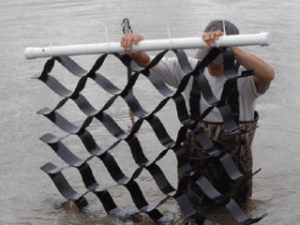ARTIFICIAL reefs are to be built in local waters to boost fish supplies which have been depleted by over-fishing, pollution, dredging and dumping.
Reefs provide nursing and feeding grounds for all sorts of marine life including larger fish sold in local markets.
Fisheries officer David Cook said it was hoped local stocks would be boosted and the diversity of marine life in Hong Kong would increase with the reefs.
”We see that there’s a need to provide some level of redress for the perceived damage that’s occurring to the marine environment,” he said.
Fishermen and environmentalists have stepped up campaigns in the past year to call attention to the destruction caused by dredging and dumping for the airport projects. Silt is stirred up that can smother corals and drive away fish.
But overfishing is also a concern and Mr Cook said fishing around the reefs would be restricted.
He said fishermen in Malaysia and Thailand had abided by fishing restrictions around artificial reefs in their waters because they increased fish production by up to 400 times in some cases.
It was impossible to say how much impact the scheme would have on Hong Kong fisheries as this would be proportional to the scale of the project, he said.
But fish stocks are expected to increase when the first reefs are set up in soon-to-be-established marine parks where legislation already restricts fishing, he said. The first park is expected to be declared later this year, probably in the eastern waters.
But the declaration of the parks is likely to be slow and cover only a limited area, and any large-scale setting up of artificial reefs will require about $65 million.
The Jockey Club’s $1.6 million contribution will be used towards setting set up the first few reefs and determine the best reef sites.
The programme is separate from trials being carried out on an artificial reef made from coal ash in Hoi Ha Wan, which is still underway. Until results are available on its safety, the reefs will be made from more expensive reinforced concrete.
It is also hoped to use sunken ships, possibly some of the hundreds of vessels destroyed by the Marine Department each year, as these can provide the solid surface and nooks and crannies needed for a successful reef.
Hong Kong’s natural coral reefs are in the eastern waters and many have been damaged by dredging and pollution and by a mysterious water current last month that killed everything in a 40-square-kilometre area.
Most of the rest of the sea bottom is flat and soft, and the reefs will provide a place for marine organisms to grow, providing food for larger animals.By KATHY GRIFFIN
Mr Cook said. Dozens of unique habitat models at fishiding.com

